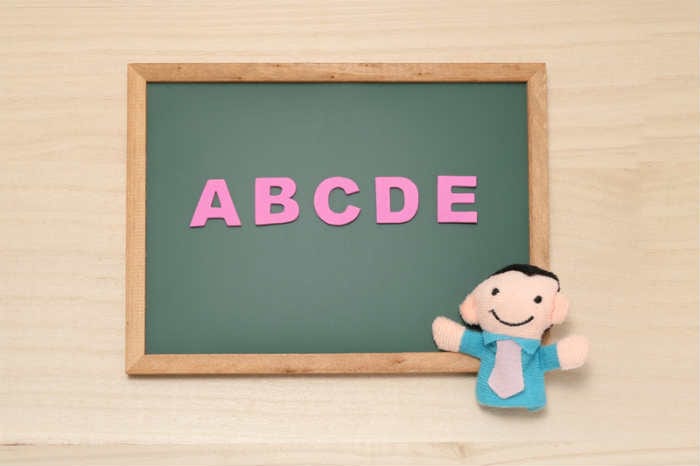











Acceptance and Commitment Therapy (ACT) is a rapidly growing form of psychotherapy. Created in the 1980s by Stephen Hayes, it is considered one of the “third wave” psychotherapies, which include dialectical behavior therapy (DBT) and schema therapy. It is an offshoot of cognitive behavioral therapy (CBT) and relational frame theory (RFT). In ACT, you want to get rid of the distractions and frustration caused by trying to control your thoughts and, instead, focus on value-laden behavior that is going to improve your well-being.

A primary goal of ACT is to increase your psychological flexibility. With flexibility comes the ability to cope effectively with negative feelings and move forward productively.
To fully understand ACT you must first have a brief understanding of its roots in RFT and CBT:
RFT is basically a behavioral theory of language. We attach meaning to certain words because we have been taught associations with that word and those associations have been reinforced. For example, we are taught that a ball is a round object and when “ball” is mentioned, we can be sure that a round object is almost always in the vicinity.
This “relational frame” can also occur with emotions. Say someone gets into a car accident. From that point on, they associate cars, and likely other moving vehicles, with the accident. When someone mentions to them that they need to take a car ride, they may become anxious and afraid to participate. Therefore, the word car has become associated with the accident and the ensuing anxiety that goes with it. It is important to note that we give words meaning through their associations. If we are better able to strip language down to face value it helps us to avoid getting bogged down in our negative emotions.
CBT aims to change thoughts and behavior in order to promote psychological health. The underlying premise of CBT is that thoughts lead to feelings. Human beings have many distorted thoughts that lead to negative feelings. For example, if you consistently think poorly about yourself you are likely to have depressive feelings.
In CBT, an individual with maladaptive thinking patterns would work on changing them to be more realistic. That change would help improve their emotional state. Additionally, certain behaviors are maladaptive and need to be changed to make feelings more positive. You may, for example, only get 5 hours of sleep per night. Since a lack of sleep is associated with numerous negative consequences, working on positive sleep hygiene practices would be recommended. Like CBT, ACT is a relatively brief therapy, meaning you can see meaningful improvement within 6 months (or sooner) of beginning weekly treatment.
Although ACT recognizes the relationship between thoughts and feelings, it takes a different direction from CBT. ACT believes that, instead of working to change thoughts, you should learn to accept negative thoughts and change your relationship with them. One of the main emphases of ACT is being mindful and committing to value-enhancing behavior. While mindfulness may be recommended as part of CBT, it is an essential part of ACT. Further, unlike CBT, behavior should be acted on in accordance with one’s personal values rather than just because they might be good for you. CBT has more of a problem-solving feel to it, while ACT is more about improving overall wellness.
A major goal of ACT is to increase your psychological flexibility. Hayes has recognized six principles of ACT which help to improve the plasticity of the mind.
As you might have guessed from its name, acceptance is a main principle of ACT. You do not want to take the time and energy to fight against your thoughts. The more you fight the more distress it causes. Thoughts, like feelings, are not something abnormal that needs to be changed. You are going to have negative thoughts and you need to be able to accept them and move on. Putting a judgment on thoughts is what gets people stuck in negativity.
You can see the influence of Relational Frame Theory in the process of cognitive defusion. A good way to sum up cognitive defusion is the attempt to see thoughts as just thoughts. Thoughts are really just words. They don’t mean anything unless we make them mean something. In cognitive defusion, an individual is asked to notice and observe thoughts without getting caught up in them and assigning judgment to them.
This process primarily refers to the practice of mindfulness. Mindfulness is all about living in the moment rather than focusing on the past or future. Rather than trying to avoid thoughts, mindfulness emphasizes noticing your thoughts but refraining from judgment. This is not something that happens overnight. It is difficult to learn how to allow painful thoughts into our minds without becoming wrapped up in them. Mindfulness is an essential part of ACT and reflects a large portion of what this treatment is attempting to achieve.
This process recognizes that we are not just made up of our experiences. There is a self that exists outside our thoughts and feelings. In this process, an individual wants to get in touch with the observing self. Think of it as a part of you outside yourself that is noticing what you are thinking, feeling, and doing. The importance of the self as context is in the ability to detach from the part of yourself that is caught up in its experience so it may focus on moving forward with healthy behavior that meets your values.
Speaking of values, they make up another one of the core processes. Part of ACT is figuring out what you stand for and what you care about. In essence, what is important to you? When you have been able to recognize your values, you then want to identify what behavior can help you achieve them. You are likely to be more motivated to achieve behavior that matches your values.
Finally, ACT helps you commit to behavior that is consistent with your values. It is not until you take action that you will lead a fulfilling life. This is different from CBT in that behavior change meshes with what is important to you. CBT may ask you to do positive behavior but it may not agree with your personal values. In ACT, behavior change has a purpose that you can get behind.
There is no set timetable for treatment through ACT. Some people may benefit after one session while others may stay in treatment for an extended period. Unlike some other therapies, ACT is not a treatment recommended for a specific number of sessions. It is based on principles that can be addressed in a flexible fashion depending on the individual and their specific issues.
Realistically speaking, however, you should not expect to reach your goals in only a few sessions. Improving one’s self takes time. On the other hand, ACT is not a psychodynamic therapy that will ask you to attend three times a week for years. It is posited that by embracing acceptance and working toward your values improvement occurs more quickly than when you try to change or control your thoughts.
As a client, you can expect to be educated in the ACT model and begin to understand how your thoughts and behavior are contributing to your issues. Your work in session will mirror the core processes. You will work on acceptance of your feelings and detaching yourself from your negative thoughts. You will be taught to practice mindfulness and will explore your values.
A therapist will then help you commit to taking action in accordance with those values. Most therapists, at the very least, will ask you to think about what you want to accomplish outside of the session and are likely to give you some tasks (e.g., mindfulness, goal setting) to work on at home.
ACT appears ideally suited to the treatment of anxiety. Avoidance is almost always the first impulse in reaction to anxiety but it is counterproductive. Because ACT emphasizes acceptance over avoidance it forces one to confront their feelings and learn how to have a healthier relationship with them. In addition, mindfulness helps people to be calm and present rather than focus on past and future worries.
OCD used to be classified as an anxiety disorder so it is not surprising to find that ACT might be effective in its treatment. Exposure and response prevention, the most accepted form of treatment for OCD, has a lot in common with ACT. Both require confrontation of problematic thoughts and taking away their obsessive power. The principles of acceptance and cognitive defusion are particularly valuable in treating OCD.
Emotional avoidance and control are major components of eating disorders. With an emphasis on acceptance over avoidance, ACT acts to counteract those variables. Moreover, mindfulness and acceptance, two central facets of ACT, are associated with better treatment outcomes in individuals with eating disorders.[1] Further, ACT’s focus on value-oriented behavior may increase the motivation missing in many people with eating disorders.
Similar to anxiety, coping with trauma requires one to resist avoidance and be able to think about traumatic instances without the associated negativity. It is similar to a non-judgmental exposure exercise. In addition, mindfulness can be particularly helpful in helping people stay in the moment and not re-experience the trauma.
ACT helps clients separate themselves from their emotions. Instead of thinking, “I’m depressed,” they notice that they are having depressive feelings. This is extremely positive in that it helps people avoid harmful labels that perpetuate negative moods. Additionally, by accepting negative thoughts you can help them pass faster than trying to wrestle with them and change them. Further, focusing on actions that match your values promotes positive behavior that helps banish depression.
ACT has some of its strongest support as a treatment for chronic pain. Unlike conventional methods, which aim to decrease pain, ACT focuses on changing responses to pain. Individuals are counseled to notice their discomfort rather than trying to control it. Further, working toward value-laden goals helps people have another focus and allows them to stop concentrating on their pain.
People with ADHD are constantly in their heads, seemingly unable to slow down and focus. Mindfulness, as challenging as it may be, helps people to slow cognitive processes and be present in the moment. People with ADHD also have a poor self-image and engage in self-stigmatizing thoughts. ACT helps people to separate their sense of self from their negative judgment. Finally, it is hard for people with ADHD to maintain motivation as their focus is often shifting. Because ACT asks people to set goals according to their values, it has a better chance of helping people with ADHD stay motivated to achieve a fulfilling life.
People suffering from substance abuse often feel considerable shame due to their damaging behavior and inability to stop using harmful substances. Shame is associated with a negative outcome for substance abuse. The judgment-free approach of ACT frees those people from shame and helps point them toward establishing positive goals. Moreover, it aids them in reducing negative labels that often accompany addictive behavior (e.g., I’m a bad person).[2]
Almost no problem is more troubling than psychosis. It is highly debilitating and the emotional consequences can be as severe as the symptoms themselves. While hallucinations and delusions cannot be eliminated by psychotherapy alone, ACT attempts to help people with psychosis alter their attitudes toward their symptoms.
As a result, psychotic symptoms take on less importance, and striving for goals becomes paramount. In addition, by detaching their view of self from their symptoms they can reduce negativity and self-stigma. Mindfulness practice can also help people focus on the present rather than constantly think about their symptoms and how they negatively affect their lives. The overall difficulty in treating psychosis makes any positive gains from psychotherapy very valuable. It has been noted that ACT may help reduce re-hospitalization rates and reduce delusional symptoms.[3]
Almost all types of psychotherapy sound good in theory. What you want to know is if ACT will help you. As a newer psychotherapy, it does not have the breadth of outcome research as more established therapies, but the results so far are promising. A 2015 meta-analysis of almost 40 randomly controlled research trials noted that people undergoing ACT showed significant improvement over placebo and gains were consistent with conventional treatments, such as CBT.[4] Studies included in the analysis measured treatment for anxiety, depression, chronic pain, and addiction, among other issues. Another study found that ACT and CBT achieved similar treatment outcomes.[5]
Further, the Society of Clinical Psychology, a division within the American Psychological Association, has determined that Acceptance and Commitment Therapy has strong or moderate research support as an effective treatment for chronic pain, anxiety, depression, OCD, and psychosis.[6]
You might ask, why try ACT when CBT is more established and appears to provide similar results? Also, since ACT has not been around as long, it is reasonable to question whether its effectiveness continues long-term. In fact, there is research that suggests that CBT may be preferable to ACT over the long run.[7]
It is important to remember, however, that ACT has a different emphasis than CBT. It possesses a more open and less judgmental stance and is likely to be preferred by certain people. As ACT becomes more popular, the research into its efficacy will surely increase. With more research studying its effectiveness, especially over the long term, the choice between the two therapies will become clearer to consumers.
ACT is a compassionate, positive type of psychotherapy. It does not judge your thoughts and feelings. It is likely to be a refreshing change for those people who are frequently told they need to alter their behavior. However, certain types of people may find ACT more challenging than others. Perfectionistic individuals may have a more difficult time with it due to its stance of open-minded acceptance over control.
Moreover, many people are problem solvers; they like to check things off their list. Because ACT is not as overt about solving specific problems it may be frustrating to those who prefer concrete indications of progress. This does not mean ACT would not be helpful to those people, it simply means that their frustrations may inhibit their treatment outcomes.
For those who are willing to persevere, however, they will obtain important benefits. As ACT gains acceptance and popularity, more therapists are learning how to administer it. If you or a loved one are suffering from anxiety, depression, substance abuse, or trauma, and you feel ACT might be a good fit, it appears a worthy alternative.
Sources